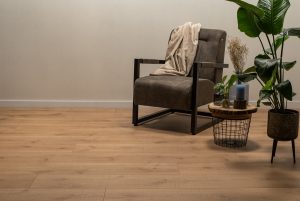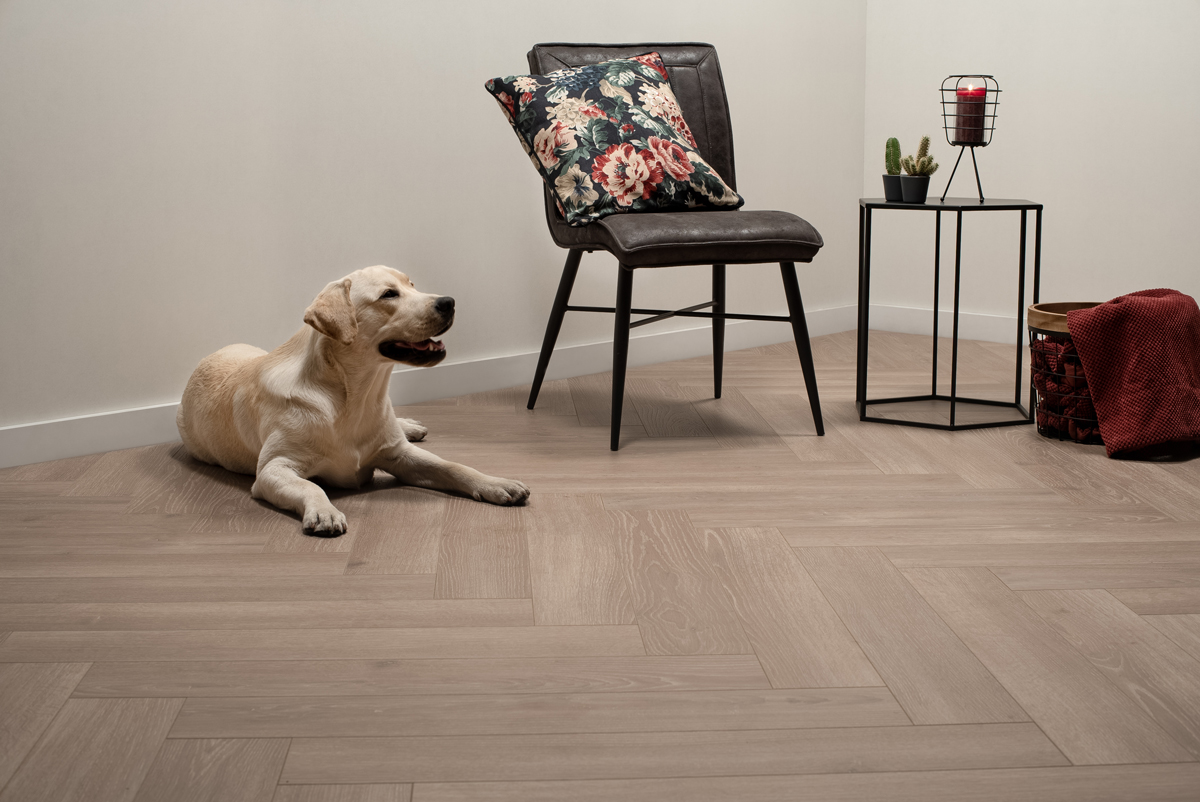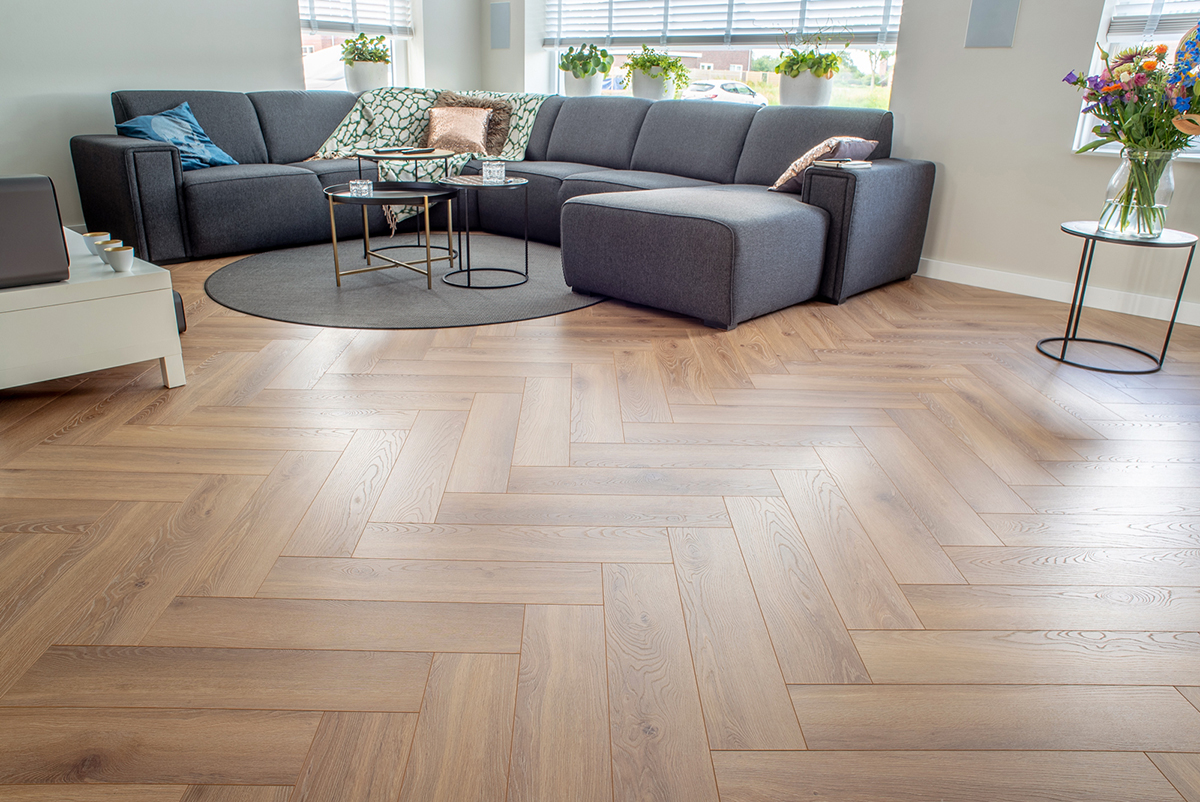Choosing a floor for your new home can be a tough decision. There are many types of floor, some are better for underfloor heating, others are completely waterproof. And to think that in addition to the technical choice, you also have to choose the style of the floor. We understand that this can be confusing. In this blog, we will discuss the differences between Laminate and Hybrid Wood flooring.

Plank composition differences between laminate and hybrid wood floors
Although the floors are similar in terms of plank construction, there are differences between laminate and hybrid wood floors. For example, laminate floors have a decorative layer and a melamine layer. The decorative layer is actually an image of a specific design printed onto the plank and is protected by the melamine layer. These layers are then applied to an HDF core board. The construction of hybrid wood floors is different. Here, wood scraps and fine resins are pressed together with a layer of real wood veneer. This veneer layer is then finished with an iron resistant lacquer. Both types of flooring have a wood-like appearance, but laminate is not made from real wood, whereas hybrid wood flooring is.
Different installation methods
When choosing a floor, the installation method is an important factor to consider. Installing a glued floor requires more skill than installing a floating floor. Fortunately, laminate flooring is installed floating same as a hybrid wood, which makes installation much easier thanks to its convenient click system. However, it is still important to consider the distance between the wall and the floor when installing either type of flooring. Both can be sensitive to temperature changes, which can cause the boards to expand or shrink.

Did you know?
Hybrid wood floors can also be glued down! One advantage of gluing a floor together is the walking sound. With a glued floor you create a more solid walking sound. Even though the non-contact underlay has a noise-reducing function, specially made for laminate and hybrid wood!
Herringbone laminate vs herringbone hybrid wood
One specific difference is the way in which herringbone floors are laid. Laying a herringbone floor is generally more difficult than laying straight lines. Typically, herringbone laminate flooring requires the use of left and right sections, which can sometimes lead to confusion when deciding on the laying sequence. However, Hybrid Wood Herringbone floors are a little simpler as there is no distinction between left and right sections. These floors have a Unizip joint, which means that even left-handed people can install them.
Differences in water resistance
People often choose floors that are also water resistant. It is sometimes thought that laminate and wood floors are out of the question. This is not necessary! For example, City Laminate floors are water resistant for 4 hours, while Hybrid Wood floors are water resistant for up to 24 hours. So don’t worry if you accidentally knock over the dog’s water bowl. Still need a floor that is completely waterproof? Have a look at our Herringbone Vinyl floors!

Which floor requires the least maintenance?
Wood floors are often associated with a lot of maintenance and treatment, such as re-oiling an oak parquet floor over time. But this is not the case with hybrid wood floors. Despite being made entirely of wood, you don’t have to worry about intensive maintenance. In fact, laminate and hybrid wood require pretty much the same maintenance. Vacuum occasionally and, if necessary, wipe with a damp mop and a floor cleaner suitable for this type of floor. A child can do the cleaning!
Which floor is suitable for underfloor heating?
Underfloor heating is a popular source of heat these days. But which flooring is suitable for underfloor heating? While vinyl is the most efficient in combination with underfloor heating, laminate and hybrid wood also perform well. Hybrid floors, for example, have a thermal resistance of 0.07 m²K/W. The same applies to the extra wide Country House laminate floors. The herringbone laminate floor has a slightly higher thermal resistance of 0.09 m²K/W. Both are therefore suitable for underfloor heating, but always check the thermal resistance of the floor carefully.

In short, both laminate and hybrid wood can be installed as a floating floor, which makes installation easier. Water resistance is an important factor to consider, with hybrid wood floors generally being more water resistant than laminate floors. Both types of flooring are relatively easy to maintain, requiring only occasional vacuuming and mopping with a suitable cleaner. In addition, both laminate and hybrid wood floors are suitable for underfloor heating, but it is always important to check the thermal resistance of the floor.
And while a hybrid wood floor offers the authentic look of real wood, Floer’s laminate floors also feature realistic oak designs!






